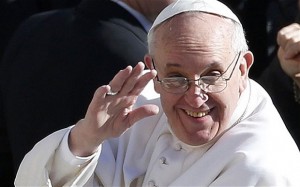At the Chesterton conference last year, Joseph Pearce in his talk gave us a preview of what would be the subject of his then-upcoming book “The Good, the Bad, and the Beautiful: History in Three Dimensions.”
The following from the prologue provides the framework for this book.
These threads reflect the three facets of man, who manifests himself in life and therefore in history as homo viator, homo superbus, and anthropos.
… Homo viator is pilgrim man; he is the man on the journey of life, which he sees as the quest for heaven, his ultimate and only true purpose. His is the path of virtue, the path of the saints and aspiring saints. He weaves the threads of goodness that we see in history.
… Homo superbus is proud man; he is the man who refuses the appointed journey, spurning the quest for heaven so that he can “do his own thing”. Homo superbus does not sacrifice his life for others; he sacrifices the lives of others for himself. He wanders from the path of virtue in the waywardness of egocentrism and the viciousness that is its cankered fruit. He weaves the bad threads of wickedness that we see in history.
… Anthropos is poetic man; he is man who looks up in wonder at the beauty of the cosmos, singing its praises by the making of beautiful things. His is the way of creativity that reflects the presence of the Creator Himself in the creation of beautiful works. He weaves the threads of beauty that illuminate the threads of goodness, offering hope in the midst of evil.
Each chapter covers a different century from the First Century to the Twentieth Century. His framework gives us a thumbnail snapshot of what is good, bad, and beautiful in each century covered. Even with so much to cover and so much that necessarily had to be left out, I enjoyed what he concentration on it.
His brevity could still include fascinating details to bring alive these points in history. I could imagine the amount of effort this book took to weave together a considerable amount of research and whittling it down to size.
One thing I like about the format is you get some sense of each century on its own merits. Some history can relate it is a march of progress, which is an artificially contrived framework. I consider this an insightful and brilliant work and one I would want to read again.





